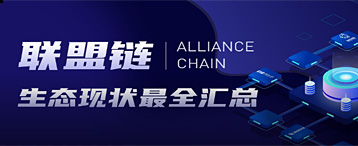-
Analysis of Difficulties in Ethereum Bifurcation under ETH2.0 POS Merger
 joint
joint 2022-09-21
2022-09-21 3941
3941 ETH
ETH
-
Summary:As markets recover, the ETH2.0 joined as many investors focused on the topic, particularly for the miners, the merger means the Ethereum to pow mining, then the miners can dig into other currencies, and there are some people in the market began to split ends.
As markets recover, the ETH2.0 joined as many investors focused on the topic, particularly for the miners, the merger means the Ethereum to pow mining, then the miners can dig into other currencies, and there are some people in the market began to split ends, will put forward the Ethereum like 17 years COINS bifurcate, born a variety of bifurcate COINS, So is this feasible for Ethereum today? We need to make an argument.
The nature of bifurcation
Before we talk about forks, we need to understand some of the details of the fork, which is relatively easy to understand for those who have been through the 17-year Bitcoin fork market. The fork of Bitcoin is essentially a process in which the fork team develops a new all-node client that is different from the Core team. In this client, code is specified to perform specific steps after a certain block height to change the asset name so that it is different from the original Core client, thus implementing the fork.
The bifurcation process is essentially the copying of a ledger, then changing its name and diverging from one block to another. Here is a detail, one is the change of asset name, for example, the original name is BTC, after the fork, one name is BTC, one name is BCC (after BCC changed to BCH), so as to prevent the transfer error, that is, replay attack.
Replay attack Simply put, since the technology of the two chains is the same, the transaction request of this chain will be received by the node of the other chain, thus completing the transfer process. Therefore, in order to avoid replay attack, it is necessary to change the name of one chain after the fork, so as to avoid confusion.
For example, after BTC fork, if there is no anti-replay attack, then we may have this situation, transfer A payment from BTC chain to A wallet, the result is not only BTC is transferred to A wallet, even the fork chain BCC is also transferred to A wallet, so we need A wallet to transfer only BTC, not BCC.
Potential problems with an Ethereum 2.0 fork
With BTC split ends, we'll the Ethereum bifurcate, if will happen and BTC is different, the Ethereum is divided into two kinds of accounts, one is the ordinary individual account, also is our/private key generated by mnemonic words wallet account, another is the account of the contract, when contract is the deployment of smart generated account, The operation of the contract account is generally operated by the contract deployer or owner with permissions, or the user interacts with the contract.
The contract account does not have a private key or a mnemonic, so this is also a difficulty in the fork process. We all know that there are a lot of decentralized applications Dapps and smart contracts deployed on Ethereum, and these are also one of the difficulties of forking with Ethereum.
Following the principle that forks are ledger duplications, we will have UnisWAP applications on the new Ethereum POS chain and UnisWAP applications on the old Ethereum POW chain, and that will create a problem, which is asset forks, We get both old and new Ethereum assets on POW and POS chain (one of them may be renamed), so will we get new and old assets on POW and POS chain? For example, two USDTs, by rule, should be available, so this will cause many other assets issued on Ethereum to fork.
This will lead to the following problems. We assume that for example, the USDT issuer announced that the value of USDT on POW chain is 0, and all USDT is subject to POS, so this problem may occur. That is, some users who put the USDT on a DAPP like UnisWAp to form an LP with ETH for liquidity mining may face the loss of fork assets. Because in the first block after the fork, many of the early runners may start to buy the forked USDT (although the value is 0, but still in the liquidity pool) and exchange the forked ETH, which will create a series of confusion, causing some users to lose.
How can this be avoided? General users can withdraw the coins in the liquidity pool before the fork and transfer their assets to their personal wallets. In this way, asset losses after the fork can be avoided. However, this will bring new problems, and removing the coins in the pool is equivalent to changing the foundation of DEFI. Other currencies and smart contract liquidity pool tokens that do not fork (reset to zero) will also prompt users to withdraw their liquidity pool before the fork.
We all know the Ethereum now have a lot of money on DeFi are locked in the smart contracts and liquidity pool, so if that happens, will be the big blow for the Ethereum ecological, is just like a normal person veins in normal blood flow, flow stopped suddenly, this nature is not normal, will cause significant volatility in currency market, Therefore, it is not desirable.
Before ETH and ETC forks, there was no DeFi on Ethereum, there was no liquidity mining, even if there were assets, as long as the project side declared the failure of a fork asset on the chain, it would be easy to solve, but now the Ethereum ecology has developed and sound, so the difficulty of fork is also greatly increased.
Relative influence on the lighter from the Ethereum snapshot, and then do a new POW chain, get rid of other ecological application DApp and homogeneity, the effects of non homogeneous tokens, although the impact is lighter, but this new development ecological chain need to start from scratch, also need to burn a lot of money and time, can not be eliminated, The key to all this is that there must be a leader with strong rallying ability in the community. Obviously, in terms of the current Ethereum community and ecology, it is more difficult, because the previous IP-1559 has given you the answer, and those opponents did not make waves in the end.
Conclusion
In general, if Ethereum 2.0 arrives this year, it will be very difficult for the forking chain to succeed, especially since Ethereum is still mainly centered on the V God, and there is no one who can command the developers to come out, especially with the money to maintain the computing power on the forking chain, so in general, The possibility of forks and new chains in the Ethereum 2.0 upgrade is relatively small.
Disclaimer:As an open information publishing platform, shilian only represents the author's personal views and has nothing to do with shilian. If the article, picture, audio or video contains infringement, violation or other inappropriate remarks, please provide relevant materials and send it to: 2785592653@qq.com.
Hint:The information provided on this site does not represent any investment suggestion. Investment is risky, and you must be cautious when entering the market.
ShilianFan group:Provide the latest hot news, airdrop candy, red envelopes and other benefits, WeChat: rtt4322.
















